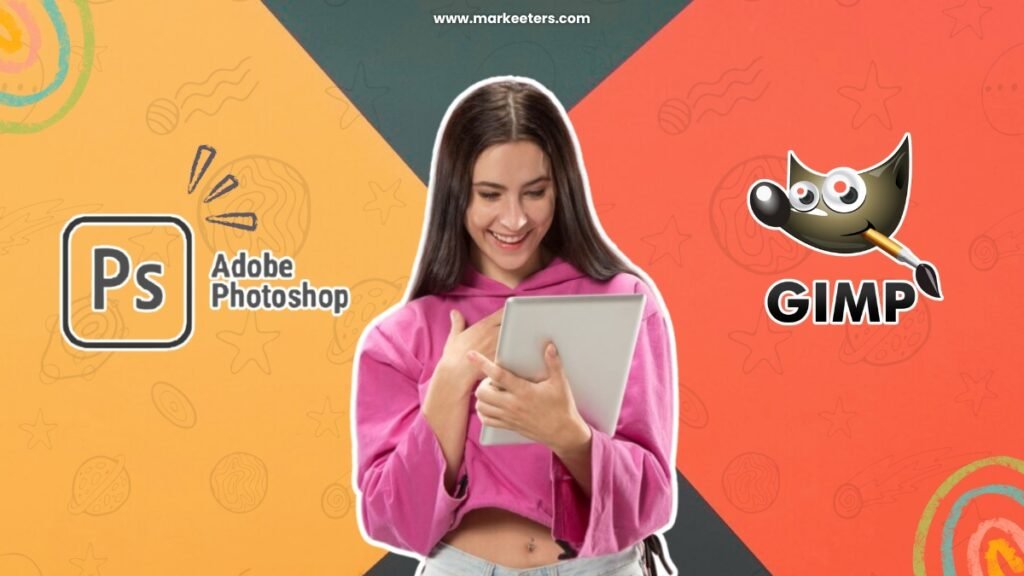In today’s market, it is simply two different marketing methods that are used for reaching possible customers: Inbound Marketing and Outbound Marketing. In this blog, we will explore Inbound vs Outbound Marketing: What’s the Difference?
Introduction
Which marketing strategy – inbound or outbound – is the most effective? This debate has been going around for quite some time. It has become difficult for modern marketers to capture the attention of their customers due to the overwhelming amount of advertisements, offers, and options. The customer of today is more informed and aware than ever before. Therefore, marketers who previously depended on large-scale efforts to raise awareness now have to come up with fresh and unique strategies for persuasion.
So, now businesses can either adopt a passive approach and hope their product ends up being the best option, or they can be proactive and become the information source that consumers are seeking. But, what distinguishes inbound marketing from more traditional outbound marketing? The difference between inbound and outbound marketing for companies sometimes goes beyond differences in strategy. Continue reading to explore each type of marketing and what makes them different from each other.
Interesting Statistics about Inbound and Outbound Marketing
| Inbound Marketing | Outbound Marketing |
| Inbound Marketing costs $14 less than traditional marketing for each newly acquired customer. (Emarsys) | Merely 18% of individuals within the marketing field hold the view that outbound marketing yields leads of superior quality. (Impactplus) |
| 68% of marketers say social media marketing has helped them generate more leads. (Datareportal) | Among those who watch TV ads, 55% do not pay attention due to channel-switching, multi-tasking, or fast-forwarding. (Think with Google) |
What are Inbound and Outbound Marketing?
Inbound Marketing
Inbound Marketing is an approach that brings new customers to buy products or services with the help of social media marketing, content marketing, search engine optimisation (SEO), branding, etc.
Few examples:
- Social Media Marketing (SMM)
- Email Marketing
- Search Engine Optimisation (SEO)
- Video Marketing
- Referral Marketing
- Content Marketing (blogs, articles, webinars, e-books etc.)
The objective of inbound marketing is to “pull customers” with relevant, interesting and useful content. The creators of the SaaS business HubSpot, Brain Halligan and Dharmesh Shah are credited with coining this phrase. As per these creators, there are normally three stages:
- ATTRACT the right audience
- ENGAGE by giving solutions to the pain points of the people
- DELIGHT by making them understand the usefulness of your product or service

1. Attract:
Enhancing the content on your website, which is helpful and interesting at this stage, is essential for attracting potential customers. You can leverage keyword research tools such as Google Trends, SEMrush, Ahrefs, WordStream, and more to identify your target audience searches.
Learn more: How to Choose the Right Keywords for Content Writing?
2. Engage:
Some website visitors will make an immediate purchase after visiting and browsing your website. But this is not always the case. This is because they require time to think about their problems and what they need, consider their situations, and weigh potential solutions. Even if they don’t purchase, you want them to stay or consider purchasing at a later stage. But when it is time to make a purchase, your brand should top the list. You can do this with the help of email newsletters. Encourage web visitors to register, and then share regular updates with them.
3. Delight:
Satisfied customers might refer your business to their friends and family, which would increase your business and revenue. Well, what are you doing to make them happy? One way of doing this is to create a good product for your customers. It doesn’t matter how many strategies you employ for its branding and marketing. It is supposed to solve customer pain points. In addition to this, you should give your customers advice on how they can most benefit from their product or service. This can be done by making “How-to manuals, blog posts, videos, social media content, webinars, and more.
Pros of Inbound Marketing
- Economical: Inbound marketing is economical because it focuses on organic traffic and creates valuable content that can be shared across several platforms.
- Creates Credibility: Inbound marketing supports companies in gaining the confidence and credibility of their target audience by offering solutions and resources that meet their requirements and pain points.
Cons of Inbound Marketing
- Demands Time: Inbound marketing takes time to show results, as businesses must first build an audience and reputation for being credible.
- Limited Control: Businesses have limited control over inbound marketing because it depends on how often they communicate with their audience.
Outbound Marketing
Outbound marketing refers to the use of advertising, e-mails, TV commercials, newspaper advertisements, etc. in order to reach a large number of customers who are interested in buying products and services.
Few Examples:
- Direct Mail
- Cold Calling
- Trade Shows and Events
- Print Advertising (newspapers, magazines, etc.)
- TV
- Radio Advertising
Outbound marketing consists of completely different strategies. We can broadly categorise it into the following stages:
- Determine your TARGET AUDIENCE (who should view your message)
- MESSAGE PUSHING (actively push your message out)
- FOLLOW-UP (if there is no response, get in touch with your target audience again)
1. Determine your Target Audience:
You need to choose who should view your message by determining your target audience. Even strategies such as cold emailing and cold calling are not meaningless. To push their messaging, businesses typically acquire a relevant list of phone numbers or email addresses (for example, those who are X company’s customers).
2. Message Pushing:
Here, you create and spread the message you want your target audience to view. You can create social media ads to spread the message with a relevant and effective call to action. You can create a pitch for cold calling and cold emailing.
3. Follow-Up:
If there is no response or reaction to your original message, you might want to think about following up with your audience. You can send a follow-up email to see if someone is interested. You can do follow-ups by retargeting for social media advertising.
Pros of Outbound Marketing
- Instant Results: With the help of outbound marketing, companies can quickly reach their audience and produce immediate results.
- Increases Efficiency: Businesses can target their particular demographic groups and geographic areas via outbound marketing. This results in an increase in the efficiency of marketing operations.
Cons of Outbound Marketing
- Minimal Engagement: Outbound marketing focuses on one-way communication which makes it less interactive and engaging.
- Less Trustworthy: Outbound marketing is often considered annoying and distracting by the target audience which makes it less credible and trustworthy.
If you are still confused about inbound and outbound marketing, hire a digital marketer to understand the terms comprehensively. You might want to take their help in order to initiate your marketing campaigns successfully.
Also read: Growth Team Vs. Marketing Team (& How They Can Work Together)
Inbound vs Outbound Marketing
Here is a tabular representation of the key differences between Inbound and Outbound Marketing:
| Criteria | Inbound Marketing | Outbound Marketing |
| Engagement | Aims to build relationships via two-way communication. Encourages interactions, comments, and social sharing. | It is a one-way communication. There is limited engagement. There is a minimum scope of direct interaction and feedback. |
| Content-Type | Provides educational, informative and customer-centric content. This includes blogs, social media posts, videos, podcasts, and newsletters. | Provides promotional content and often distracting. This includes TV/radio ads, print ads, cold calls, and pop-up online ads. |
| Strategy | Pull Strategy: organically attracting customers by providing valuable, helpful and useful content and solutions to the pain points, | Push Strategy: spreads marketing messages to a wider audience all at once, interrupting their activities, to create awareness and generate leads. |
| Consent | Depends on customer consent. Customers willingly engage with the content. | Messages are disseminated to a wider audience regardless of their interest, so it does not always depend on customer consent. |
| Metrics | Website traffic, social media engagement, conversion rates, and customer feedback are all included in the metrics. | The metrics include reach, impressions, click-through rate, and lead generation. |
| Targeting | Personalisation is a key focus. Targets specific audience segments based on their interests, behaviours, and demographics. | A Broader audience is targeted without thorough segmentation. Aims to reach as many people as possible. |
| Cost-effectiveness | Generally a cost-effective approach in the long run as it aims at organic growth and the content remains accessible over time. | It can be an expensive approach, especially for TV and radio ads, with costs based on prime time and ad placement. |
| Trust | Focuses on creating trust via helpful, valuable, and relevant content. Establishes long-term customer relationships and builds trust. | Aims at creating awareness but may struggle to build trust due to its interrupting nature. |
Conclusion
To summarise the blog: Inbound vs. Outbound Marketing: What’s the difference? It is quite obvious that a business cannot depend on one type of marketing. Businesses can blend these two forms and create relatable content to reach their target audience. It is not simple to create, plan, and carry out marketing campaigns. It takes a lot of expertise, time, and hard work. You analyse reports and optimise alongside. These are two unique methods with their own pros and cons. Ultimately, the choice depends on the business, its goals, target audience, and available resources.
More resources for you:
Digital Marketing vs. Growth Marketing: Which Strategy Should You Choose?
15 Powerful Reasons Your Business Requires SEO Today
Why Hiring a Social Media Manager for a Small Business Matters?
10 Benefits of Blogging for Business and Marketing
Frequently Asked Question
Which is better inbound or outbound?
Inbound is typically thought to be beneficial for business. It allows the business to establish relationships with its customers. Outbound might also be successful, however, it is perceived as bothersome and can jeopardise relationships with customers.
Is Google Ads inbound or outbound?
Google ads are believed to be the most effective inbound marketing channel. Inbound marketing is used when a user a looking for a product or service. Outbound is used when a business actively seeks out potential customers.
Is SEO inbound or outbound marketing?
SEO is inbound marketing. It makes use of search traffic to produce content that is intended for a specific audience. By doing this, it can attract customers to your business who are inclined to buy products or make other conversions.
What are the 4 C’s of digital marketing?
Customer, Cost, Convenience, and Communication are the 4 C’s of digital marketing. These 4 C’s help predict a business’s likelihood of long-term success or failure. The centre of any marketing plan is the consumer. You are unlikely to make money if the customer chooses not to purchase your product or service.





